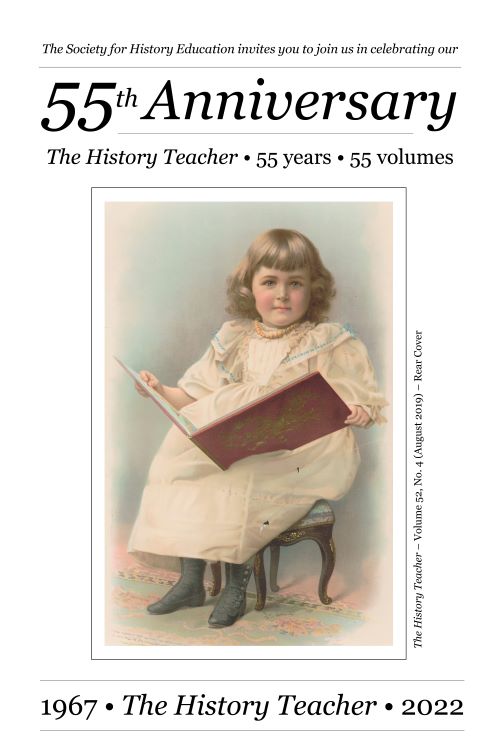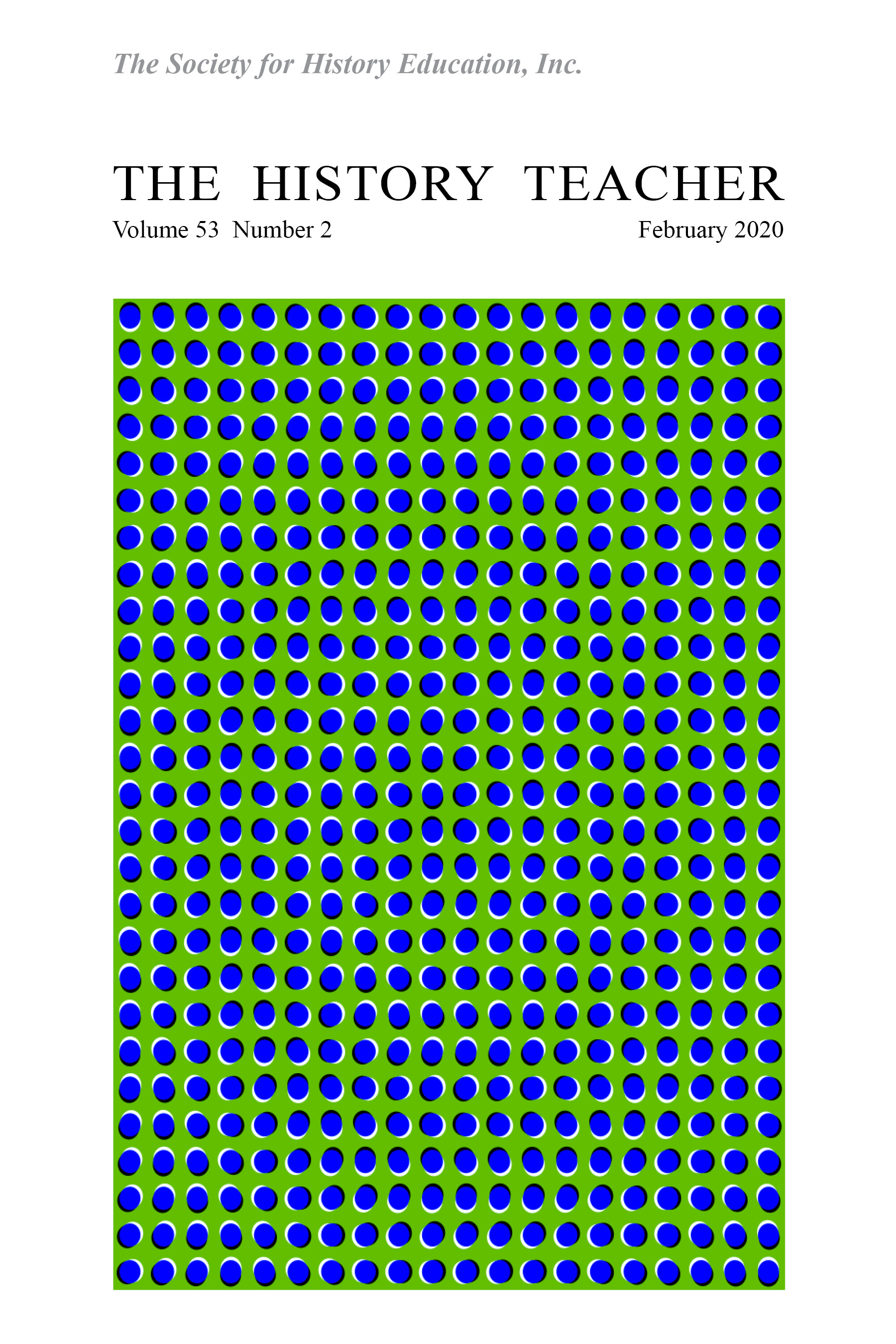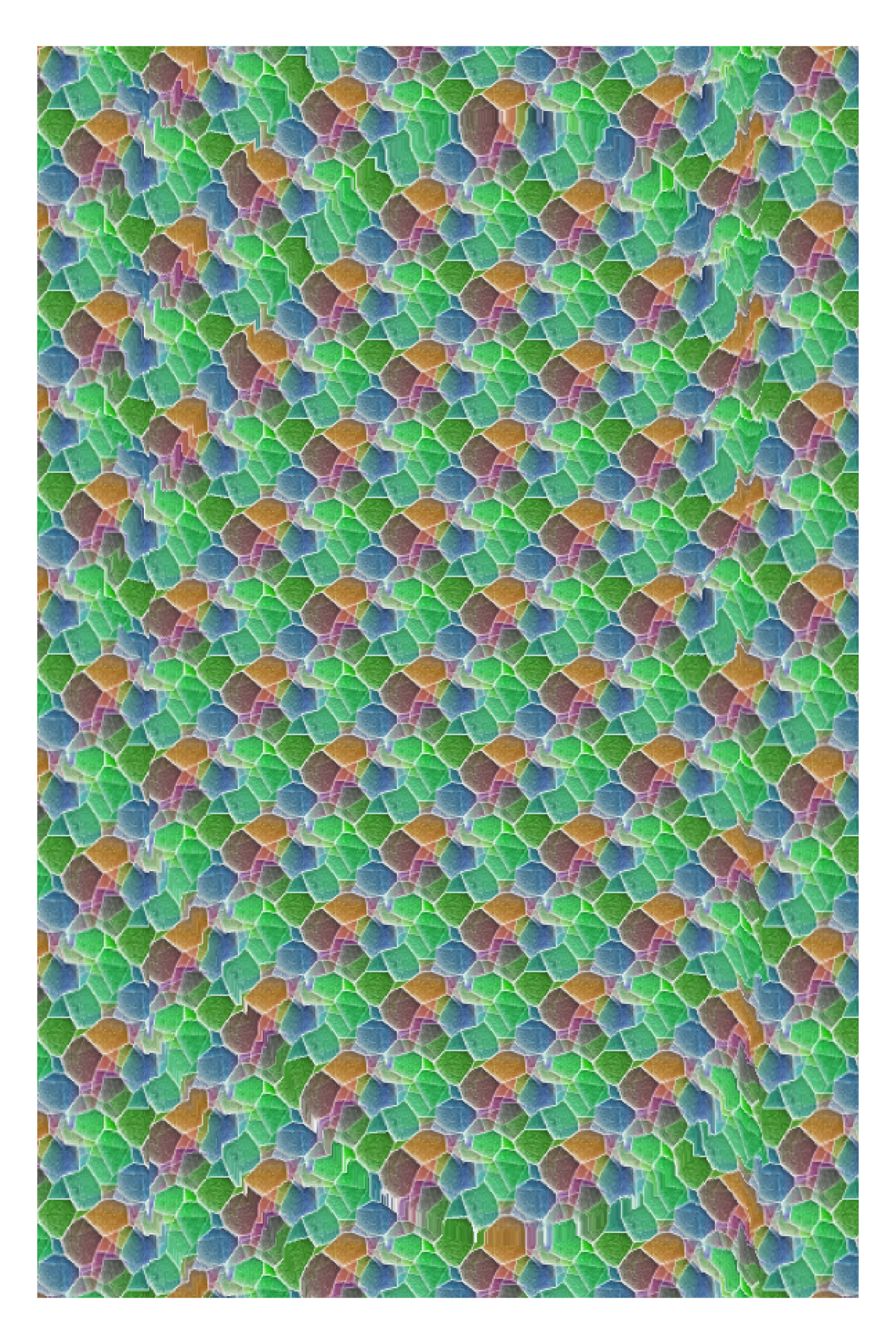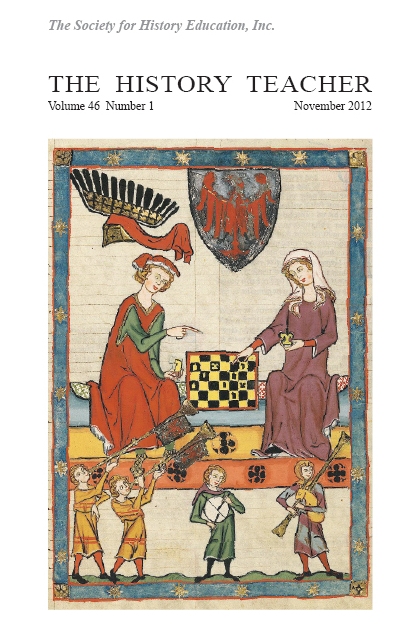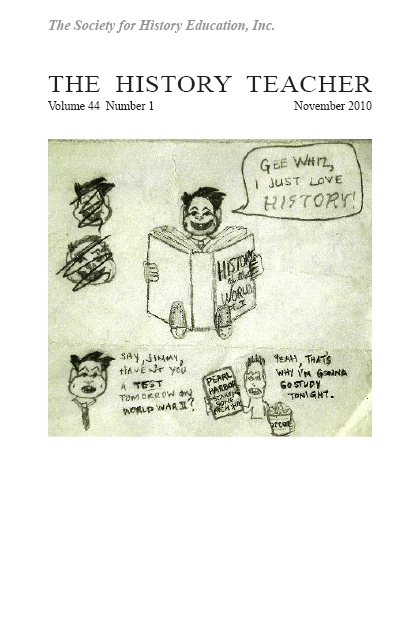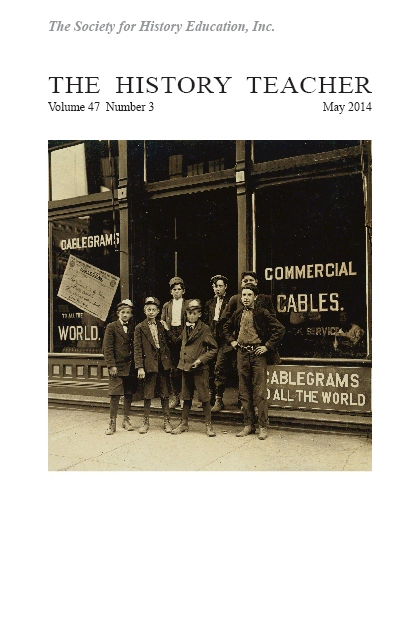The History Teacher
Volume 53, No. 2
February 2020
Front Matter | Back Matter
THE CRAFT OF TEACHING
Role-Play in the History Classroom
How Well Do Structured Controversy Debates—and a Dash of "Fake History"—Promote Historical Thinking?
by David L. Ellis and Mark A. Vincent
(pp. 209-237)
Early Design Challenges in Developing a Reacting to the Past Game
by James R. Schiffman
(pp. 239-253)
Elementary and Middle School History
Middle Level Students' Responses to a Guided Inquiry of the Weeping Time
by John H. Bickford III, Molly Sigler Bickford, and Razak Kwame Dwomoh
(pp. 255-318)
Freedom Summer and the Foot Soldiers of the Civil Rights Movement: Bottom-Up Historical Inquiry to Combat the Master Narrative
by Jeremiah Clabough and John H. Bickford III
(pp. 319-353)
NOTES AND COMMENTS
Enacting Historical Thinking with Heuristic Organizers
by Sherri Rae Colby
(pp. 355-375)
REVIEWS
Full Reviews Section
(pp. 377-396)
Clark, Catherine E. Paris and The Cliché of History: The City and Photographs, 1860-1970
by Lela F. Kerley
Adalet, Begüm. Hotels and Highways: The Construction of Modernization Theory in Cold War Turkey
by Caterina Scaramelli
Bradley, Stefan M. Upending the Ivory Tower: Civil Rights, Black Power, and the Ivy League
by Elizabeth A. Lundeen
Brown, Marie Grace. Khartoum at Night: Fashion and Body Politics in Imperial Sudan
by Katie J. Hickerson
Cooper, Frederick. Citizenship, Inequality, and Difference: Historical Perspectives
by Brendan A. Shanahan
Marten, James. The History of Childhood: A Very Short Introduction
by Paul Ringel
Purdy, Michelle A. Transforming the Elite: Black Students and the Desegregation of Private Schools
by Scott A. Cashion
Rankin, Joy Lisi. A People's History of Computing in the United States
by Lewis Call
Silber, Nina. This War Ain't Over: Fighting the Civil War in New Deal America
by Michael E. Brandon
Swinth, Kirsten. Feminism's Forgotten Fight: The Unfinished Struggle for Work and Family
by Katarina Keane
Twarog, Emily E. LB. Politics of the Pantry: Housewives, Food, and Consumer Protest in Twentieth-Century America
by Anna Zeide
Wineburg, Sam. Why Learn History (When It's Already on Your Phone)?
by David Neumann
Yoshikawa, Lisa. Making History Matter: Kuroita Katsumi and the Construction of Imperial Japan
by Luke Franks
IN EVERY ISSUE
207 Contributors to The History Teacher
376 The History of The History Teacher
397 Questionnaire for Potential Reviewers
398 Membership/Subscription Information
400 Submission Guidelines for The History Teacher
ADVERTISERS IN THIS ISSUE
236 Sultan Qaboos Cultural Center: Indian Ocean in World History
254 Association for Asian Studies: Attend an AAS Conference
354 Society for History Education: Celebrating 50 Years
CONTRIBUTORS
John H. Bickford is a former Mid-Prairie (Iowa) Middle School Social Studies Teacher and a current Associate Professor of Social Studies/History Education in the Department of Teaching, Learning, and Foundations at Eastern Illinois University. His undergraduate degree in History, graduate degree in Education, and doctoral degree in Secondary Social Studies Education are all from the University of Iowa.
Molly Sigler Bickford has over a decade of experience teaching middle school English/Language Arts. She is currently a Teacher at Charleston Middle School in Charleston, Illinois. Her B.S. and M.S.Ed. are both from Eastern Illinois University. She has teaching and research interests in human rights education within and beyond America’s borders.
Jeremiah Clabough is a former middle and high school Social Studies Teacher and current Associate Professor of Social Studies Education in the Department of Curriculum and Instruction at the University of Alabama at Birmingham. His doctorate in Secondary Social Studies Education is from the University of Tennessee. He has published numerous articles on the role that primary sources play in fostering historical thinking for middle and high school students.
Sherri R. Colby is an Associate Professor of Curriculum and Instruction and an Adjunct Professor of History at Texas A&M University-Commerce. Her research focuses on historical thinking, historical empathy, educational biography, and qualitative methodologies. At TAMUC, she teaches qualitative research, teaching and learning in history, and secondary education. She earned her doctorate in 2008 from the University of North Texas in Curriculum and Instruction, with an emphasis in History Education.
Razak Kwame Dwomoh is a former Ghanaian Social Studies and History Teacher. He earned an undergraduate degree in Economics and History from the University of Cape Coast (Ghana) and a M.S.Ed. in Curriculum and Instruction at Eastern Illinois University. He is a doctoral student at Purdue University specializing in Social Studies Education.
David L. Ellis (Ph.D., The University of Chicago) is a Professor of History at Augustana College and is the author of Politics and Piety: The Protestant Awakening in Prussia, 1816-1856 (Studies in the History of Christian Traditions, 186, series ed. Robert J. Bast) (Leiden, Netherlands: Brill, 2017).
James R. Schiffman received a Ph.D. in Communication from Georgia State University in 2012 and began teaching in the Mass Communication Department at Georgia College and State University that same year. Schiffman holds a Master's in Chinese History from the University of Colorado, with a minor field in American History. Schiffman's scholarly interests focus on radio history, and he teaches the History of Broadcasting at GCSU.
Mark A. Vincent (Ph.D., Indiana University) is a Professor of Psychology at Augustana College, and his publications include "Attitude Accessibility and its Consequences for Judgment and Behavior," co-authored with R. H. Fazio, in Influencing Behavior: Theory and Applications in Recreation, Tourism, and Natural Resources Management, ed. Michael J. Manfredo (Champaign, IL: Sagamore Press, 1992).
|
